Milledgeville is a lovely, almost gothic Southern town that is home to: the college where my mom teaches, a military institute, a prison, and an asylum.
The asylum used to be the central sanitorium for the state of Georgia. It has its own train depot. And though it now has about 800, rather than 8,000 inhabitants, it is one of the strangest things I have ever seen. Milledgeville is also the hometown of the writer Flannery O'Connor.
There is a wonderful community of people including my mom's colleagues, her neighbors, and her landlord, Rebecca and Victor Hugo Hobbs. I also got to meet Flannery O'Connor's cousin, the inimitable Louise Florencourt, at my reading; and Tina Yarborough, art history professor extraordinaire, at the counter of the local coffee shop. And I got to watch my mother, undaunted, explain the plot of Fahrenheit 451 to a woman who had been making donuts since 4am.
I was very lucky to get to do two events – one at The Blackbird, the local coffee roaster and my favorite place in town,
the other at Andalusia Farm, the Flannery O’Connor Foundation. Auspiciously, and unbeknownst to me, the latter took place on National Museum Day.
The Blackbird was the first place I visited where my picture was on the door, and on the wall of the ladies’ bathroom (didn’t check the men’s).
The event had been very kindly organized by Michael Packard (on the left, photographed with John), and I got to know a lot of the Blackbird clan. They are artists of the latte, competing in a number of competitions for being able to create beautiful patterns in the milk poured top.
If you are ever in the area, you should go there.
After spending the morning working and chatting with Chrissy Begemann, of the college public affair's office, that night I did a reading and we had a spirited discussion in their downstairs room. It is the first time anyone has ever stuck up for the word “homunculus” being used in a museum wall label (see Museum Legs chapter 7, "Revenge of the Homunculus").
At Andalusia, which was Flannery O'Connor's home, I was speaking in the late morning on Saturday.
Here are some pictures of both building structures near the main house (above) and rocking chairs on the porch, which together give a pretty accurate vibe of the place.
O'Connor's bedroom is on the first floor, just to the left. She had suffered from lupus, hence the crutches.
I spoke in the room across the hall, where one of the first questions of the Q&A was whether I had coordinated my dress to the drapes.
My mother actually baked for the occasion – coffee cake and “glop," a family recipe that is essentially date bread.
She brought a basket of tablecloths and real plates (glass ones with balls around the edges I remember from childhood) and set up in the room off of Flannery O’Connor’s kitchen.
Apparently, the refrigerator was the first thing O'Connor bought, for her mother, when she first sold a short story.
I was speaking, not directly about Museum Legs, but on "Lifelong Creativity." We were looking at creativity as a process. Usually (and especially in museums), we look at creativity from an aerial view, seeing someone’s whole life once we know the achievement reached. The creative output starts to look inevitable. But for the creative person, they are usually a bit more in the woods, or the weeds, staring at a tree. The trick in recognizing everyone’s creativity is to cultivate more comfort with this present-minded, moment-to-moment sense of creativity.
I was speaking, not directly about Museum Legs, but on "Lifelong Creativity." We were looking at creativity as a process. Usually (and especially in museums), we look at creativity from an aerial view, seeing someone’s whole life once we know the achievement reached. The creative output starts to look inevitable. But for the creative person, they are usually a bit more in the woods, or the weeds, staring at a tree. The trick in recognizing everyone’s creativity is to cultivate more comfort with this present-minded, moment-to-moment sense of creativity.
I told stories about famous creative people and the untidiness of how they arrived at their great moments. For example, Harper Lee, the author of To Kill a Mockingbird, went to law school at the University of Alabama and wrote for the campus humor magazine. She dropped out and moved to New York City where, around 1950, she got a job as a reservations agent at Eastern Airlines. She woke up and went to work every day for years not thinking of herself as a to-be-famous writer. She worked in that job for six years before, in November of 1956, she got literary agent. That Christmas—a month later—two of her best friends, a couple, gave her a year’s salary to write the book. Even still, she is said to have thrown the manuscript out the window more than once in frustration.
Here is Jan Clark with Therry Deal, colleagues and friends of my mother:
Here is Jan Clark with Therry Deal, colleagues and friends of my mother:
The Q&A was particularly interesting, including a question from Dr. Deal about whether some people focused their energy on worrying about their health before they got old enough to worry about death. This was somehow delivered in a light and knowing tone.
I got asked a variation on the central question about how creativity stacks up against necessity (money for art classes vs. money for children with cancer or roads or the military) and gave my standard answer that is inevitably about my parents. My father was a neurologist and my mother is, by training, a medievalist. Once someone asked him how they got along when the were in such different fields. He said he was in the business of saving lives but she was in the business of making lives worth saving. What I loved most about this comment was that they actually flipped roles all the time. He worked on quality of life issues like debilitating headaches and being able to walk despite nerve damage. She worked on life survival skills like being able to write in complete sentences. My mother almost never talks about her personal life, so the comment was part thesis, part news flash.
After the talk, a woman came up to me and explained how she was really an artist but had become a lawyer. I didn't know who she was and we talked for a while. The more she talked the more I thought she actually was an artist. She was extremely funny and present, and nearly anything she said could have gone straight into a performance. For example, I signed a book to her sister while she was saying, “I would have made a wonderful only child.” She spoke with a twinkly-eyed deadpan, and a lot of good spirit too. Well, I finally learned she is Louise Florencourt, one of Flannery O'Connor's first cousins ("the Boston cousins"). Here is Miss Florencourt with my mother:
What I did not know until later is that not only was she a lawyer, she was literally in the first class of women at Harvard Law School. I consider that kind of life a work of art unto itself.
I got asked a variation on the central question about how creativity stacks up against necessity (money for art classes vs. money for children with cancer or roads or the military) and gave my standard answer that is inevitably about my parents. My father was a neurologist and my mother is, by training, a medievalist. Once someone asked him how they got along when the were in such different fields. He said he was in the business of saving lives but she was in the business of making lives worth saving. What I loved most about this comment was that they actually flipped roles all the time. He worked on quality of life issues like debilitating headaches and being able to walk despite nerve damage. She worked on life survival skills like being able to write in complete sentences. My mother almost never talks about her personal life, so the comment was part thesis, part news flash.
After the talk, a woman came up to me and explained how she was really an artist but had become a lawyer. I didn't know who she was and we talked for a while. The more she talked the more I thought she actually was an artist. She was extremely funny and present, and nearly anything she said could have gone straight into a performance. For example, I signed a book to her sister while she was saying, “I would have made a wonderful only child.” She spoke with a twinkly-eyed deadpan, and a lot of good spirit too. Well, I finally learned she is Louise Florencourt, one of Flannery O'Connor's first cousins ("the Boston cousins"). Here is Miss Florencourt with my mother:
What I did not know until later is that not only was she a lawyer, she was literally in the first class of women at Harvard Law School. I consider that kind of life a work of art unto itself.
Craig Amason, the director of the foundation, who has the distinction of having given the most flattering introduction I've ever received, is wonderfully good at PR. The first day in town, I was astonished that the top of the local paper read "Hope in the Face of Art" with a story on page 3.
Before I left, I helped my mom deejay a playlist for a "Silent Disco" event for The Big Read. We loaded up Earth, Wind, and Fire, and some old-school hip hop. Insert peals of laughter from my mom at some of the lyrics (the L.L. Cool J. that starts with a sultry "Go ahead, Daddy"), before she ended up agreeing the beat was eminently danceable. Onward to Birmingham. . . .Interesting Flannery O’Connor factoid I had not known: When she was about six years old, she was on national television because she taught a chicken to walk backwards. She said her whole life after that was anticlimax. I relayed this story to Craig to make sure it was right before incorporating it into my talk. He added what Flannery O’Connor’s mother said, providing as much insight into mother-daughter relations as farm life: “Flannery never taught that chicken to walk backwards. That chicken had always walked backwards, because it was constipated.”
There actually are birds kept at Andalusia. O'Connor had kept peacocks.
And there is this chicken, of sorts, named Buddy. Anytime I photograph wildlife, I expect them to back away from the camera. Buddy came closer.
There actually are birds kept at Andalusia. O'Connor had kept peacocks.
And there is this chicken, of sorts, named Buddy. Anytime I photograph wildlife, I expect them to back away from the camera. Buddy came closer.
Another favorite part of the trip concerned the fact that my mother is an ambassador / organizer for a program called The Big Read. The whole town reads the same book, and this time the assigned title is Fahrenheit 451. My mother goes around to different venues talking up the book. Her trip the week before to Warner Robbins military base had yielded an invitation to the local Donut Shoppe where the owner had requested more information. We gave brochures to the woman working. I watched my mom explain the arc of Fahrenheit 451 to someone who had been making donuts since 4am. Looking out over a pretty lake, we then had one of those Southern breakfasts that is an ode to dairy life—eggs, grits with cream, bacon. And coffee served with non-dairy creamer.


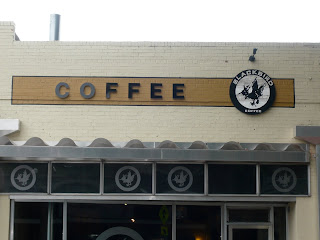
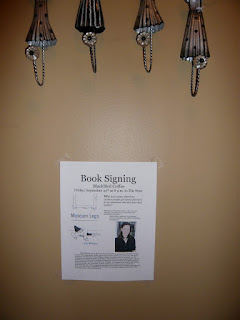
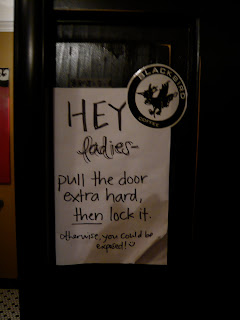
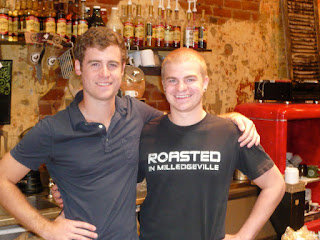





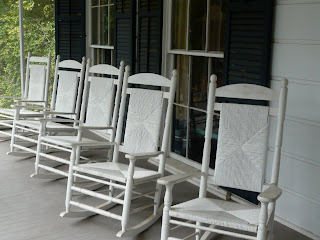


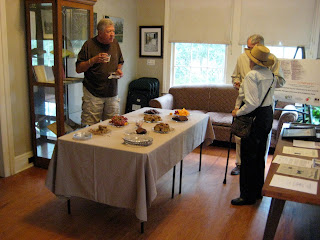




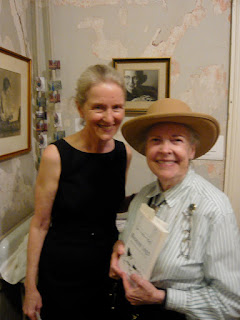





My name is Teresa Pimentel and Im from Recife in Brasil. In 1975 I met Therry Deal in my city. In december 1975 I stayed in her house in Milledgeville for 3 months. The last time we met was in 1982 when I got married and she stayed in my parents house with JB and Brad for a few days. I would like to get in touch with her again. So if by any chance someone sees this mensage please tell her that my email is trsrangel@gmail.com.br
ReplyDelete